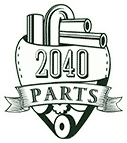1970 Mustang Deluxe Door Panels, White on 2040-parts.com
Sheffield Lake, Ohio, US

Door Panels & Hardware for Sale
 70 71 72 73 demon dart duster mopar a body rear back seat left interior panel(US $14.95)
70 71 72 73 demon dart duster mopar a body rear back seat left interior panel(US $14.95) 1934 plymouth / dodge windwing t-handles(US $100.00)
1934 plymouth / dodge windwing t-handles(US $100.00) 1939 hudson window cranks(US $80.00)
1939 hudson window cranks(US $80.00) 1967 chevelle arm rests(US $30.00)
1967 chevelle arm rests(US $30.00) 1933-34 plymouth 33 dodge sedan ash trays(US $70.00)
1933-34 plymouth 33 dodge sedan ash trays(US $70.00) 1934-35-36 plymouth / dodge windshield crank handle(US $100.00)
1934-35-36 plymouth / dodge windshield crank handle(US $100.00)
BMW 3-series convertible (2006): first official pictures
Tue, 24 Oct 2006By Phil McNamara First Official Pictures 24 October 2006 10:03 BMW 3-series convertible: the lowdown Here's the car BMW said it wouldn't develop: a 3-series convertible with a folding hard-top. Although condemned by the R&D team for being too heavy, raising the centre of gravity and sapping dynamic ability, BMW has been forced to listen to the market and introduce a glass and steel-roofed cabrio. With a large boot and easy access for luggage, the 3-series convertible promises to be practical, and the extra glass compared with a fabric cabrio should make it airy too.
New Vauxhall Astra (2010) – the Tease
Tue, 12 May 2009The new Vauxhall Astra - teased ahead of a launch at the Frankfurt Motor Show [ad#ad-1] You’d think Vauxhall would have better things to do with the current GM mess than torment buyers with teaser shots of the new Vauxhall Astra. But, just like every other car maker lately, they seem to think that this is the way to lead-in to a launch. This time we’ve got a variation on a theme, with the New Astra being ‘Disguised’ by getting the car’s designers to drape themselves (and their paperwork) strategically over the car.
The Technology Behind F1 Cars: Aerodynamics [w/Video]
Fri, 18 Oct 2013Ferrari's latest video in its ‘Discover the technology of Formula 1' YouTube series sees Scuderia Ferrari's deputy design chief Simone Resta focusing on the chassis and side pods' design and its effect on the aerodynamics. This video follows two episodes, the first of which introduced viewers to the concept of aerodynamics – which is the subject of the series' first part – while the second took a look at the design and effect of the car's front wing and nose. The great thing about this series is you don't have to be a genius – or even know your way around an F1 car – to get to grips with the concepts or terminology.



